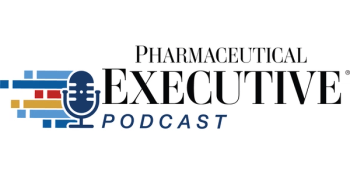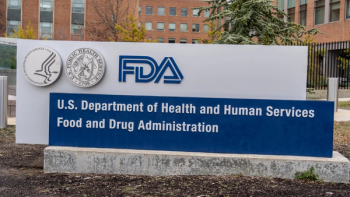Key Takeaways
- TPP and Value Archetypes Must Align Early
To secure favorable reimbursement and timely patient access, clinical teams should integrate Target Product Profiles (TPPs) with strategic Value Evidence Archetypes as early as Phase I. This alignment guides endpoint selection, trial design, and stakeholder messaging.
- Value Evidence Strategy Drives Payer Success
Selecting the right value archetype—whether Clinical Benefit, Economic Value, PRO, RWE, or Unmet Need—based on the TPP and market conditions is essential for meeting HTA and payer expectations, not just regulatory approval.
- Integrated Evidence Planning Reduces Access Risk
A coordinated lifecycle approach that evolves the TPP alongside real-world data and payer insights enables consistent, compelling value communication from clinical development through post-launch lifecycle management.
As pricing pressures, health technology assessments (HTAs), and payer gatekeeping continue to reshape the global pharmaceutical landscape, securing regulatory approval is no longer sufficient. Success now requires companies to embed market access considerations at the core of drug development, starting early and planning strategically.
Two tools stand out in this effort: the Target Product Profile (TPP) and Value Evidence Archetypes. When effectively aligned, these frameworks significantly improve the odds of securing favorable reimbursement, competitive pricing, and timely patient access.
This article explores how these tools complement each other and provides actionable insights for pharmaceutical executives aiming to build value-based success from Phase I through launch and beyond.
The Evolving Role of the Target Product Profile
The TPP is a foundational strategic document that articulates the ideal characteristics of a drug candidate. Developed early—often in the preclinical or early clinical stages—the TPP guides development toward both regulatory approval and commercial success.
It serves as a “north star” for cross-functional teams, aligning stakeholders across clinical, regulatory, commercial, and Health Economics and Outcomes Research (HEOR) functions. A robust TPP typically includes:
- Intended indication(s) and target patient population
- Route of administration and dosing regimen
- Efficacy goals (e.g., symptom reduction, survival benefit)
- Acceptable safety and tolerability thresholds
- Differentiators versus standard of care
- Desired labeling outcomes, aligned with regulatory strategy
Crucially, the TPP is not static. It evolves in response to emerging clinical data, regulatory feedback, competitive dynamics, and payer expectations. Internally, it ensures alignment among functional teams; externally, it provides a cohesive narrative for engagement with regulators, HTA bodies, and payers.
In today’s market environment, the TPP must extend beyond clinical ambition. It must anticipate the types of evidence that payers and HTA agencies will require to justify broad access and premium pricing. That’s where Value Evidence Archetypes come into play.
Understanding Value Evidence Archetypes
Value Evidence Archetypes are strategic frameworks that define the kinds of evidence required to support access and reimbursement decisions. They help teams prioritize and tailor evidence generation to the perspectives of key stakeholders, especially payers and HTA bodies.
While specific archetypes vary across indications and markets, most fall into the following categories:
- Clinical Benefit Archetype: Demonstrates superior efficacy or safety over standard of care.
- Economic Value Archetype: Shows cost-effectiveness, budget impact, or health system savings.
- Patient-Reported Outcomes (PRO) Archetype: Captures improvements in patient quality of life.
- Real-World Evidence (RWE) Archetype: Validates effectiveness in clinical practice using registries, claims data, or observational studies.
- Unmet Need/Innovation Archetype: Makes the case for access based on breakthrough innovation or lack of alternatives.
Selecting the right archetype or combination is not a check-the-box exercise. It should be informed by the product’s clinical profile, competitive landscape, regulatory pathway, and ultimately, the strategic intent embedded in the TPP.
When done well, this alignment ensures that evidence generation plans yield data that resonate with HTA reviewers and payers, not just regulators.
Aligning TPP and Value Evidence: A Strategic Imperative
The relationship between the TPP and the selected value evidence archetype is both dynamic and reciprocal. The TPP defines the product’s intended value; the archetype clarifies how that value must be demonstrated in the eyes of decision-makers.
Aligning these tools early enables coordinated planning across clinical trials, HEOR studies, and access strategies. Consider a hypothetical company developing a novel inhaled therapy for chronic obstructive pulmonary disease.
If the TPP prioritizes symptom relief and reduced exacerbations, the team may initially lean toward a Clinical Benefit Archetype. But if payers are more focused on reducing hospitalizations and emergency care costs, the company may need to pivot toward an Economic Value Archetype, integrating health system utilization data into Phase III and developing robust budget impact models.
Alternatively, a biotech developing a therapy for a rare neuromuscular disease with no approved treatments may focus on an Unmet Need/Innovation Archetype. In this case, the TPP might emphasize orphan drug designation, surrogate endpoints, and accelerated pathways that are all aligned with access strategies that highlight societal impact and urgency.
Key insight: Evidence strategy should flow directly from the TPP and the TPP must be crafted with an eye toward the archetypes most persuasive to payers.
Strategic Use Across the Drug Development Lifecycle
A coordinated, lifecycle-based approach ensures alignment between TPP development and evidence strategy. The table below outlines how the two should evolve in tandem:
This integrated approach ensures that internal teams and external stakeholders encounter a consistent and compelling value narrative from early development to market adoption.
Real-World Case Studies
Novartis’ Entresto (sacubitril/valsartan), a therapy for heart failure, exemplifies successful alignment. Early clinical data supported a Clinical Benefit Archetype, with reductions in mortality and hospitalization.
Novartis also developed compelling economic evidence, including real-world cost-offset data and budget impact models. This dual archetype strategy helped secure formulary placement despite the drug’s premium price.
In contrast, Biogen’s Aduhelm (aducanumab), a discontinued Alzheimer disease treatment, illustrates the risks of misalignment. While the TPP emphasized disease modification based on amyloid plaque reduction, the supporting evidence failed to convince payers.
The lack of clear clinical outcomes and cost-effectiveness led to limited coverage, even after FDA approval. Here, a disconnect between the TPP and the value evidence archetype resulted in access failure.
Implementation: Building the Bridge from Vision to Value
How can pharma leaders ensure TPPs and archetypes remain aligned?
- Cross-Functional TPP Development
Engage commercial, HEOR, and market access leaders early. This ensures the TPP incorporates real-world payer expectations, not just regulatory goals. - Define Archetype(s) by End of Phase II
Commit to one or more value archetypes before Phase III design is finalized. This guides endpoint selection, comparator choice, and data strategy. - Create an Integrated Evidence Plan
Align clinical trials, RWE, PROs, and health economic modeling into a single narrative that supports the selected archetype(s). - Use Archetypes to Shape HTA Dossiers
Tailor submissions to local HTA requirements, using archetypes as an organizing framework to prioritize relevant data. - Reassess as Data Evolves
Stay agile. As clinical or real-world data emerge, reassess whether the original archetype(s) remain optimal, and adjust the evidence plan as needed.
Conclusion: Access is Not an Afterthought
In today’s environment, regulatory approval is necessary but not sufficient. Aligning the Target Product Profile with the appropriate Value Evidence Archetype is not just good practice, it is a strategic imperative.
Pharmaceutical leaders who adopt this approach from early development through launch are better equipped to deliver therapies that reach patients, gain payer support, and generate long-term value.
The winners in tomorrow’s pharma market will be those who understand that value is not discovered at the finish line—it’s built into the blueprint.
About the Author
Dr. Thani Jambulingam, Professor of Food, Pharma and Healthcare, Erivan K. Haub School of Business, Saint Joseph’s University, Philadelphia.





